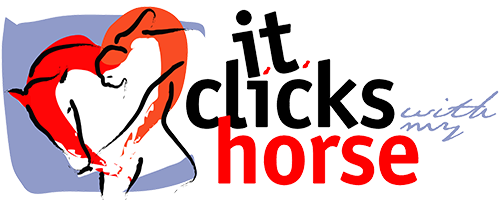Scheefgericht zijn, niet alleen spiermatig
Je weet in elk geval al dat paarden scheefgericht zijn, en dat de meesten links ingebogen zijn. Niet alleen omdat we zelf alles aan die kant doen (vanwege onze rechtshandigheid en omdat het cultureel bepaald is), maar zelfs veulens al zogen duidelijk meer linksgebogen. Als paarden mogen kiezen, zullen ze bvb. zelf altijd makkelijker linksom longeren dan rechtsom.
Er lijkt nu wat meer aan de hand te zijn dan alleen maar spieren die links meer samengetrokken zijn dan rechts. Paarden die voornamelijk monoculair zicht hebben, hebben ook bijna volledig gekruiste optische vezels, dwz het linkeroog geeft informatie naar de rechter hersenhelft, en omgekeerd. Als alles nieuw is, dan houdt het paard je eerder in z’n rechteroog (linker hersenhelft voor inschattingen). Blijkt de situatie stresserend is en mogelijk actie om actie te vragen dan verschuift het paard z’n waarneming naar het linkeroog houden (rechter hersenhelft voor het verwerken van negatieve emoties). Hieronder de twee betreffende onderzoeken uit 2008.
Visual laterality in the domestic horse (Equus caballus) interacting with humans
Kate Farmer, Konstanze Krueger and Richard W. Byrn
Abstract
Most horses have a side on which they are easier to handle and a direction they favour when working on a circle, and recent studies have suggested a correlation between emotion and visual laterality when horses observe inanimate objects. As such lateralisation could provide important clues regarding the horse’s cognitive processes, we investigated whether horses also show laterality in association with people. We gave horses the choice of entering a chute to left or right, with and without the passive, non-interactive presence of a person unknown to them. The left eye was preferred for scanning under both conditions, but significantly more so when a person was present. Traditionally, riders handle horses only from the left, so we repeated the experiment with horses specifically trained on both sides. Again, there was a consistent preference for left eye scanning in the presence of a person, whether known to the horses or not. We also examined horses interacting with a person, using both traditionally and bilaterally trained horses. Both groups showed left eye preference for viewing the person, regardless of training and test procedure. For those horses tested under both passive and interactive conditions, the left eye was preferred significantly more during interaction. We suggest that most horses prefer to use their left eye for assessment and evaluation, and that there is an emotional aspect to the choice which may be positive or negative, depending on the circumstances. We believe these results have important practical implications and that emotional laterality should be taken into account in training methods.
Laterality and emotions: Visual laterality in the domestic horse (Equus caballus) differs with objects’ emotional value
Alice De Boyer Des Roches, Marie-Annick Richard-Yris, Séverine Henry, Mohammed Ezzaouïa and Martine Hausberger
Abstract
Lateralization of emotions has received great attention in the last decades, both in humans and animals, but little interest has been given to side bias in perceptual processing. Here, we investigated the influence of the emotional valence of stimuli on visual and olfactory explorations by horses, a large mammalian species with two large monocular visual fields and almost complete decussation of optic fibres. We confronted 38 Arab mares to three objects with either a positive, negative or neutral emotional valence (novel object). The results revealed a gradient of exploration of the 3 objects according to their emotional value and a clear asymmetry in visual exploration. When exploring the novel object, mares used preferentially their right eyes, while they showed a slight tendency to use their left eyes for the negative object. No asymmetry was evidenced for the object with the positive valence. A trend for an asymmetry in olfactory investigation was also observed. Our data confirm the role of the left hemisphere in assessing novelty in horses like in many vertebrate species and the possible role of the right hemisphere in processing negative emotional responses. Our findings also suggest the importance of both hemispheres in the processing positive emotions. This study is, to our knowledge, the first to demonstrate clearly that the emotional valence of a stimulus induces a specific visual lateralization pattern.
